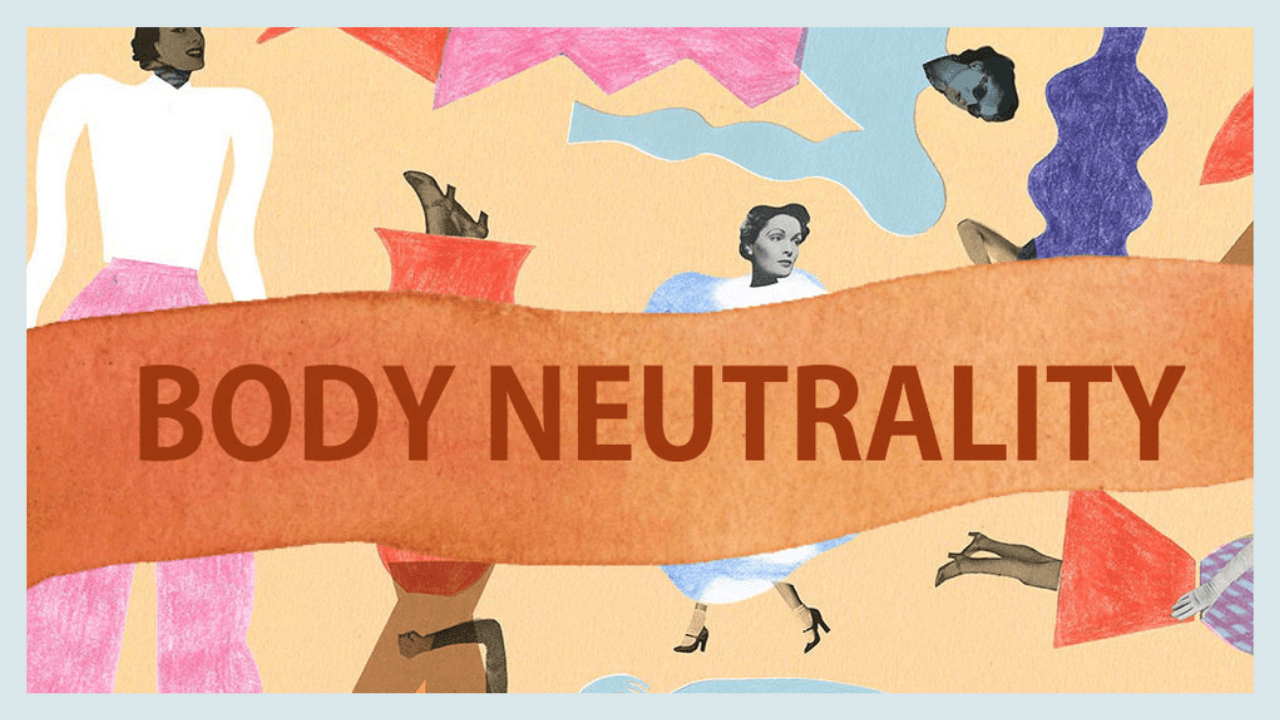Body neutrality is a new approach to the body image movement that has just begun to emerge.
This approach aims at making people accept their bodies but its way of doing that is not by preaching love for our physical appearance, rather the central focus is on what our body is capable of doing rather than trying to accept and love how it looks.
Therefore, rather than telling us to feel positive about our body and how it looks, it tends to shift our view beyond the realm of physical appearance itself.
Recently, there has been a lot of controversies regarding the counterproductive effects of the body positive movement. Body neutrality, which is a fairly new view, tries to counter the body image issue differently, but is this method better? Is body positivity, as a movement, not right?
To answer these questions, first, we have to know about the two approaches and how they differ. Let’s find out!
The Two Approaches To Body Image
Body neutrality, as a term, was introduced to the internet around 2015. However, it gained popularity and a central position in the discourse much later.
The emergence of ‘body neutrality’ does not mean that ‘body positivity’ as an approach is wrong. We cannot deny the achievement and the shift in discourse about bodies that ‘body positivity’, as an approach, has achieved.
The body-positivity movement is starting to receive a lot of criticisms, especially after it became a major movement in the last few years.
Stephanie Yeboah, a former follower of the body positivity movement, told The Guardian, “It (Body positivity) has become a buzzword, it has alienated the very people who created it. Now, in order to be body positive, you have to be acceptably fat–size 16 and under, or white or very pretty. It’s not a movement that I feel represents me anymore.”
Supporters of the body-neutrality mindset believe that having a neutral approach to the body is more inclusive as it can provide relief for people with disabilities.
“Body neutrality, I think, has the power to be really useful in particular to people with disabilities, especially those with chronic pain or people with diagnoses that are progressive. Those people are pretty frustrated with the demand to love their bodies when they feel betrayed by them. Being neutral could feel like a relief,” says Stephanie.
The body-positive mindset focuses on destroying the beauty standards that have been perpetuated in a patriarchal society.
A body-positive mind tells you that everybody is beautiful and we should love our body even if it does not fit the general standard for beauty.
A body-positive mindset perpetuates the acceptance of the body as it is, it teaches us to love ourselves as we are but it can neglect the feelings of people who do not feel aligned with their body. The “your body is perfect” approach might not work with transgender people who do not feel like their body is aligned with their true selves.
Critics of body-positivity feel that simply expanding the beauty standards to include all body types is not enough. In fact, this approach still leads to the commercialization and commodification of a wider range of beauty needs. The focus still remains on beauty and management.
Body neutrality, on the other hand, focuses on destroying the concept of beauty in terms of the body itself.
A body-neutral mindset encourages people to accept their physical appearance by removing the importance attached to it altogether. It encourages us to look beyond the outer shell, to not engage our time and obsess over our body.
Body positivity can be hard to achieve, body neutrality is the step before achieving positivity. It doesn’t necessarily have to be a counter-movement because by being body-neutral we learn to detach from the need to be beautiful, ultimately achieving the greater goal of attaching the same value to everybody.
“Body neutrality provides an alternative space for people who do not want to focus on how their bodies look, or who can’t love their bodies just yet. It gives a space to transgender people, and people with disabilities, and also to people who don’t want to feel guilty for not loving their bodies every day.”
Criticizing the body positivity movement does not mean completely disregarding the body-positive mindsets and goals, it simply means pinpointing the weaknesses and loopholes in an approach so that we can reach an understanding that is the most relevant and correct for the people in present time.
And similarly, there cannot be one perfect approach. We can only make this society better by validating different needs and producing solutions to the faults in the current trends.
Body neutrality has emerged out of the necessity to fill the gaps, to broaden the horizon, and to create an alternative to body image and issues that can work better for some.
Also Read: Why Promoting Too Much Body Positivity Is Dangerous
The Struggle Between Self-Love And Self-Hate
The truth is that self-love is not easy to achieve, it is not even something that we can one day achieve and keep forever. Self-love is a feeling, it is a process, it is a journey.
It is also important to note that self-love is not about just our physical appearance.
We often find ourselves juggling between love and hatred for our body, we often feel bad about it, we often find ourselves imperfect. It is impossible to love ourselves all the time, and it is okay to not do so.
Some psychologists feel that ‘body positivity’ as a movement puts pressure on loving oneself too much and it becomes counterproductive because all one person then does is focus on their physical appearance.
Studies show that only people with already high self-esteem are able to bear the fruits of the ‘body-positivity’ approach, for others, it becomes hard to impossible to love or accept their bodies.
Body neutrality thus emerges as an alternative that focuses on accepting not just our thighs, breasts, calves, stomach, face but also our strength, our mind, our lungs, our abilities, and potential.
Image Credits: Google Images
Sources: Feminism In India, Insider, HuffPost
Find The Blogger: @MNtweeting
This post is tagged under: Body positivity, body neutrality, body image, society, women, men, people, alternative, neutral, beauty standards, feminism, methods, phenomenon
Other Recommendations:
Watch: Top Beauty Trends Which We Didn’t Know Were Super Harmful To Our Health



































